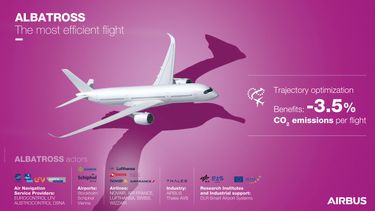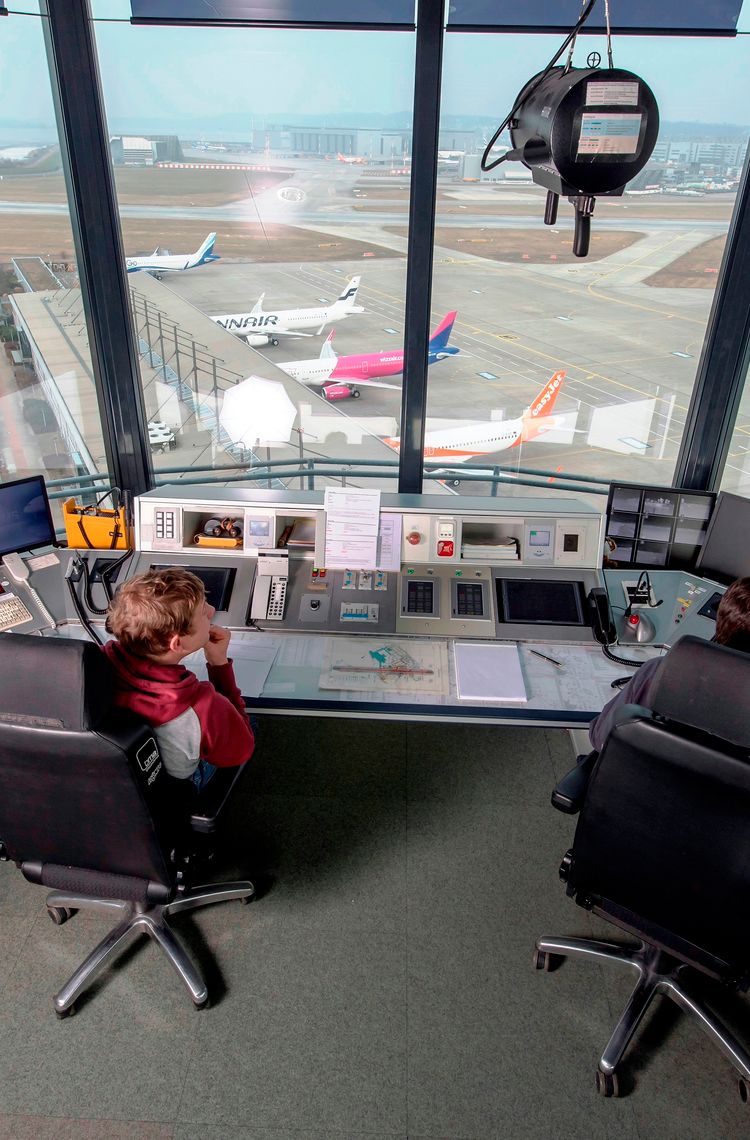Did you know that an aircraft which sends accurate predictions of its planned trajectory is an aircraft that can improve fuel efficiency and reduce CO2 emissions? This is the idea behind the four-dimensional Trajectory-Based Operations (“4D-TBO”) Airbus is currently working on.
Coordinated by Airbus in the Single European Sky ATM Research program (SESAR), ALBATROSS* is an initiative of major European aviation stakeholders to demonstrate how several solutions - covering all the flight phases including operations on ground and during the flight - can be combined and used all together to further reduce the environmental footprint of aviation in the short term.
Through the various operational solutions put into practice, Airbus and its partners are exploring how we could further optimize Air Traffic Management (ATM) and more specifically aircraft flight trajectory thanks to real-time transmission of four-dimensional trajectory data.
*: Please note that ALBATROSS is a separate initiative from the Airbus “AlbatrossOne” wing project.

What is a 4D trajectory?
The aircraft trajectory is collaboratively designed by the aircraft operator and the ANSPs (Air Navigation Service Providers) before the flight. It takes into account the airline’s business criteria and the air traffic constraints in the concerned areas. During flight it can be updated through avionics systems, in order to integrate new constraints such as meteorological changes. The trajectory is defined in four dimensions (4D) which are composed of the three geometrical dimensions (latitude, longitude and altitude), plus the time. The Estimated Time Of Arrival (ETA) at each waypoint along the trajectory is predicted with improved accuracy and shared with the ground for better visibility by air traffic controllers (ATC).
By reducing the inaccuracy of current air traffic management prediction models, the real-time transmission of four-dimensional trajectory data has proven its incredible potential to greatly improve an aircraft’s trajectory prediction paving the way to the most efficient flight of tomorrow.
Benefits of 4D-TBO in the busiest summer time
“A typical modern-day air traffic control scenario illustrates how improved trajectory prediction could make a positive impact on an aircraft’s environmental footprint” explains Mattia Nurisso, Project Leader, and Thierry Harquin, Air Traffic Management (ATM) Cooperation Manager for Airbus.
“During periods of heavy airport traffic, such as summer holidays, air traffic controllers often divert some aircraft to holding patterns (i.e. an oval course flown by aircraft awaiting further landing clearance) to better organise arrivals queuing in the terminal area. In addition, ground control often requests an aircraft begin its descent before its optimum Top of Descent (TOD) - or the point at which the planned descent to approach is initiated - due to a lack of accurate visibility of an aircraft’s optimum trajectory.”
For the aircraft it results in flying additional time or withdrawing from its optimal trajectory, which requires more fuel consumption and consequently, increases CO2 emissions. Indeed, if flying in a holding pattern at 10,000 feet and at 220 knots, an A320neo consumes 25 kg of fuel per minute, or 100 kg for a four-minute holding.
However, by transmitting complete, up-to-date information about its trajectory, an aircraft can send air traffic control invaluable data that is essential for better decision-making.
“Improved accuracy of four-dimensional trajectory predictions reduces uncertainty margins when detecting conflicting trajectories and results in fewer alerts to controllers. This reduces the need for controller intervention and means we can fly as close as possible to the initially identified optimum flight trajectory” they explain.
Specifically, fuel savings could be up to 10 kg, or the equivalent of approximately 32 kg of CO2, if an aircraft descends from its optimum Top Of Descent (TOD). When calculated over an entire year for a European jet fleet of about 5,500 aircraft, the savings could be as high as 65,000 tons of fuel.
All the Airbus teams are already prepared to pioneer a sustainable future. Stay tuned!
